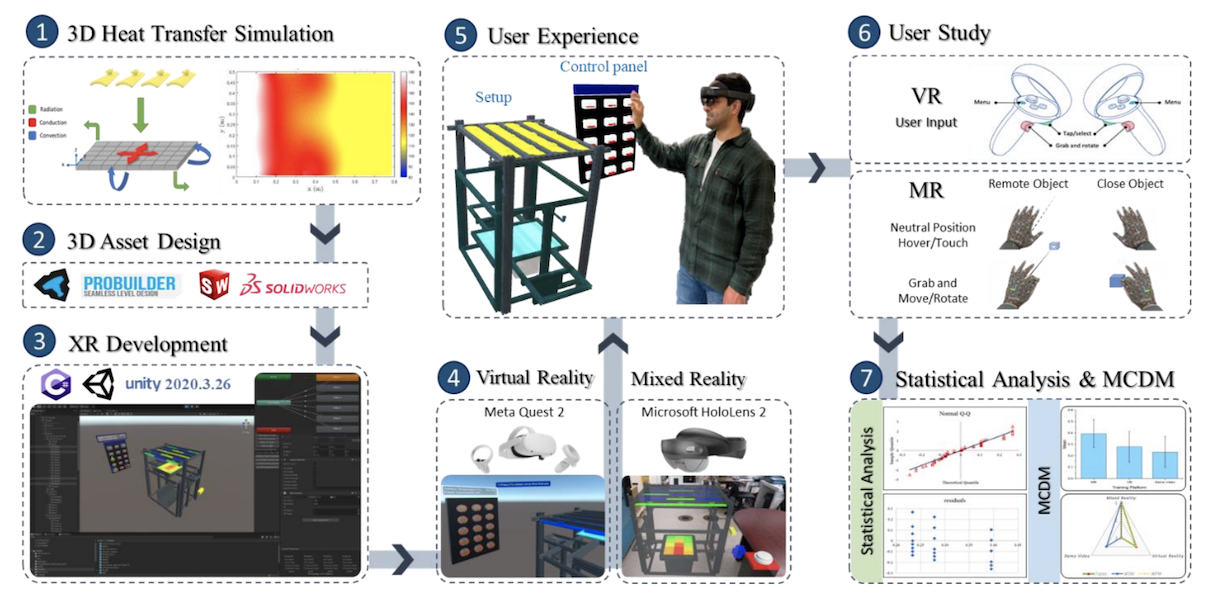VR/MR Systems Integrated with Heat Transfer Simulation for Training of Thermoforming: A Multicriteria Decision-Making User Study
Journal of Manufacturing Systems,
Iman Jalilvand, Jiyoung Jang, Bhushan Gopaluni, Abbas S. Milani
[PDF]
Abstract
The emerging Industry 5.0 paradigm emphasizes the importance of collaboration between machines and human operators in smart factories, thereby preventing full automation and elimination of the skilled workforce. One technology that has been proposed recently as a means of achieving this collaboration, is the Extended Reality (XR), particularly for operators training and upskilling. However, current XR applications in advanced manufacturing sector are rather limited, mainly focusing on maintenance or sequential training. Additionally, most of earlier studies in the field have examined the use of one type of XR environment solely, such as Virtual Reality (VR), Augmented Reality (AR), or Mixed Reality (MR) in a respective application. The present study aims to develop and compare the performance of both MR and VR environments for training operators during the monitor and control of a given thermoforming manufacturing process. To achieve this, Meta Quest 2 (VR headset) and Microsoft HoloLens 2 (MR headset) were utilized in combination with heat transfer numerical simulations of the process. A video training tool was also created and employed as a reference/conventional training method, for comparisons. A user study involving 26 participants (with a mix of prior experience) was conducted, assessing different performance criteria including the usefulness, trust, reliability, user satisfaction, training effectiveness, and overall user preference over each training tool. Results, using statistical analysis along with five Multiple Criteria Decision Making (MCDM) algorithms, collectively indicated that the users preferred MR over VR and video training in the present case study; particularly as MR provided greater presence experience and satisfaction, higher user-friendliness and reliability. A demonstration of the developed applications can be found in the Supplementary Material.
Read or Download: PDF
